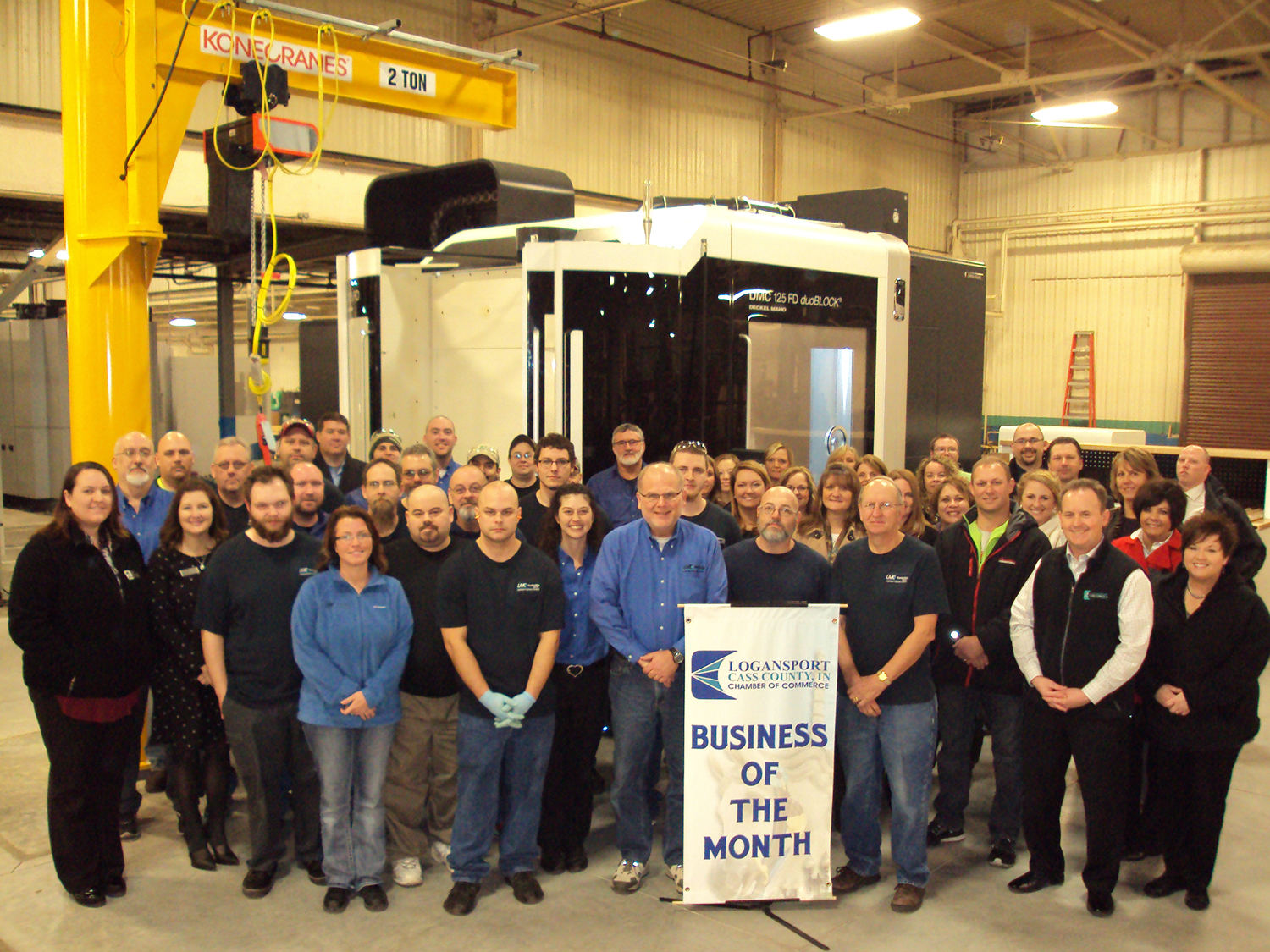
LMC Workholding, which opened for business as the Logansport Machine Company, Logansport, Ind., in 1916, is celebrating its 100th anniversary this year by highlighting the company's continuing expansion.
"We’ve been the name to know in workholding since 1916, and we’re expanding and growing to continue to meet the demand of our customers and the industry," said LMC Workholding President and CEO Jay Duerr in a recent company news release. "We’re proud to have made it to 100 years in business and we’re looking forward to serving our customers for many more years."
In 2015, according to the news release, LMC added a new Automated Turning Cell. The Mazak MY350 and Fanuc Automation R2000-265kg turning cell and robot loads parts weighing up to 350 lbs. into the CNC lathe for machining, removes them and places completed parts back on the loading pallet, a job previously done manually. The automated turning cell allows one operator to run up to four lathes with the help of the robot.
Plus, a recent $2 million project allowed LMC to add two more machines. A DMG Mori Seiki NLX1500 machine now allows LMC to make hydraulic cylinder lock checks in-house, and a DMG Mori Seiki FD125 machine has streamlined its manufacturing process.
And over the last 3 years, LMC has completed $4 million in expansions, beginning with a large expansion in 2013 at its Logansport facility that involved all green lighting, office renovations and other plant improvements. Plus, several new machines were added, including an expandable six-pallet horizontal machining center, several vertical machining centers, lathes and grinders. The machines improved LMC’s existing capabilities and were used to meet growing demands for products and services, such as larger products and specialty products.
Also in 2013, LMC partnered with NUMTEC and MAKRA, two divisions of Alpine Metal Tech GmbH. The company's latest partnership reportedly allows LMC to offer quality aluminum wheel machining solutions, including wheel testing, marking and production equipment. LMC also offers international workholding and machine tool accessory solutions through global partnerships with Chandox in Taiwan, Richter and Stiefelmayer in Germany, Tecnologie FRB in Italy and Atling in Sweden. LMC also has four offices and service centers in China.
LMC’s workholding product line includes high quality chucks and cylinders, along with special workholding devices, including aluminum wheel manufacturing equipment, high volume machining power chucks and fixtures, standard and special hydraulic steady rests, special application and large cast type manual steady rests. LMC also offers a line of patented face drivers and centers.
Contact Details
Related Glossary Terms
- centers
centers
Cone-shaped pins that support a workpiece by one or two ends during machining. The centers fit into holes drilled in the workpiece ends. Centers that turn with the workpiece are called “live” centers; those that do not are called “dead” centers.
- computer numerical control ( CNC)
computer numerical control ( CNC)
Microprocessor-based controller dedicated to a machine tool that permits the creation or modification of parts. Programmed numerical control activates the machine’s servos and spindle drives and controls the various machining operations. See DNC, direct numerical control; NC, numerical control.
- lathe
lathe
Turning machine capable of sawing, milling, grinding, gear-cutting, drilling, reaming, boring, threading, facing, chamfering, grooving, knurling, spinning, parting, necking, taper-cutting, and cam- and eccentric-cutting, as well as step- and straight-turning. Comes in a variety of forms, ranging from manual to semiautomatic to fully automatic, with major types being engine lathes, turning and contouring lathes, turret lathes and numerical-control lathes. The engine lathe consists of a headstock and spindle, tailstock, bed, carriage (complete with apron) and cross slides. Features include gear- (speed) and feed-selector levers, toolpost, compound rest, lead screw and reversing lead screw, threading dial and rapid-traverse lever. Special lathe types include through-the-spindle, camshaft and crankshaft, brake drum and rotor, spinning and gun-barrel machines. Toolroom and bench lathes are used for precision work; the former for tool-and-die work and similar tasks, the latter for small workpieces (instruments, watches), normally without a power feed. Models are typically designated according to their “swing,” or the largest-diameter workpiece that can be rotated; bed length, or the distance between centers; and horsepower generated. See turning machine.
- machining center
machining center
CNC machine tool capable of drilling, reaming, tapping, milling and boring. Normally comes with an automatic toolchanger. See automatic toolchanger.
- turning
turning
Workpiece is held in a chuck, mounted on a face plate or secured between centers and rotated while a cutting tool, normally a single-point tool, is fed into it along its periphery or across its end or face. Takes the form of straight turning (cutting along the periphery of the workpiece); taper turning (creating a taper); step turning (turning different-size diameters on the same work); chamfering (beveling an edge or shoulder); facing (cutting on an end); turning threads (usually external but can be internal); roughing (high-volume metal removal); and finishing (final light cuts). Performed on lathes, turning centers, chucking machines, automatic screw machines and similar machines.







